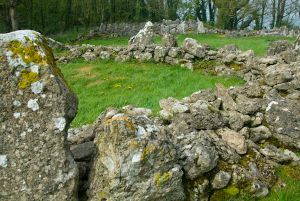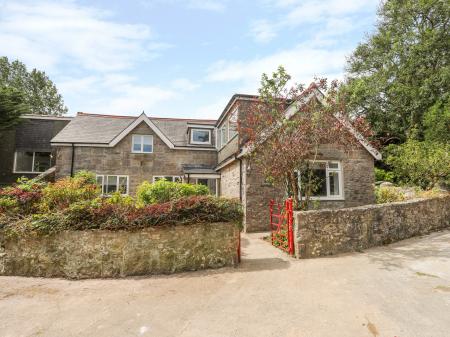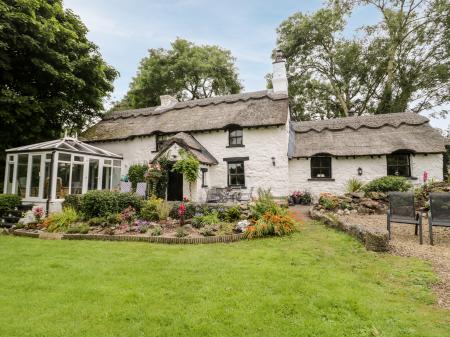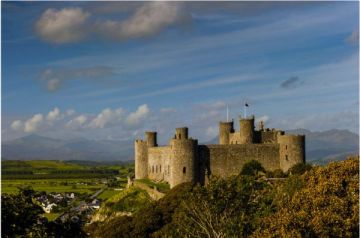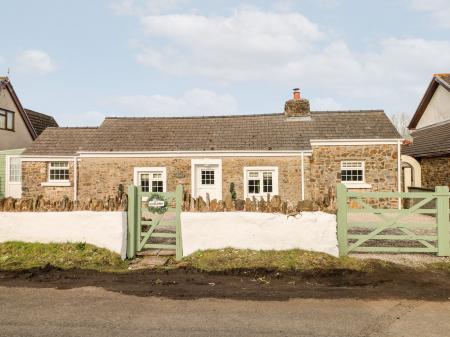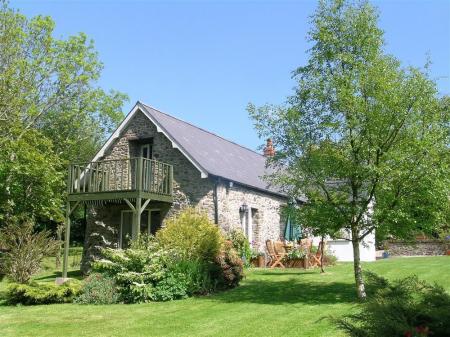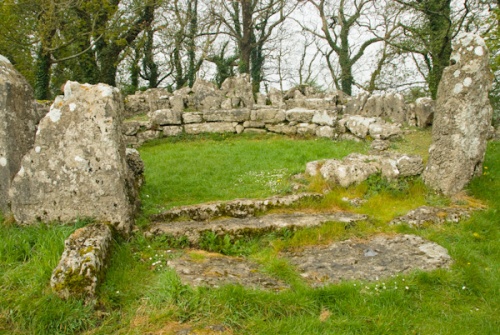
The settlement at Din Lligwy may date to before the Roman invasion, but much is from the 4th century AD, near the end of the Roman occupation of Britain. Nine huts survive within an enclosure of about half an acre; some of the huts are circular in plan and some are rectangular.
It seems clear that not all the huts were used for habitation; some were very likely workshops, and evidence has been found of iron smelting on the site.
One suggestion is that the circular huts, following the Iron Age pattern, were intended as houses, while the rectangular huts, following the Roman style, were intended as workshops.
The encircling stone wall would have been up to five feet thick in places; this was a place intended to be defended, though it seems unlikely that such a wall would have stood up to a concerted attack.
You have to pass the ruined medieval chapel to reach the settlement site, but while in the neighbourhood, don't miss the prehistoric cromlech (across the Llanallgo road)

